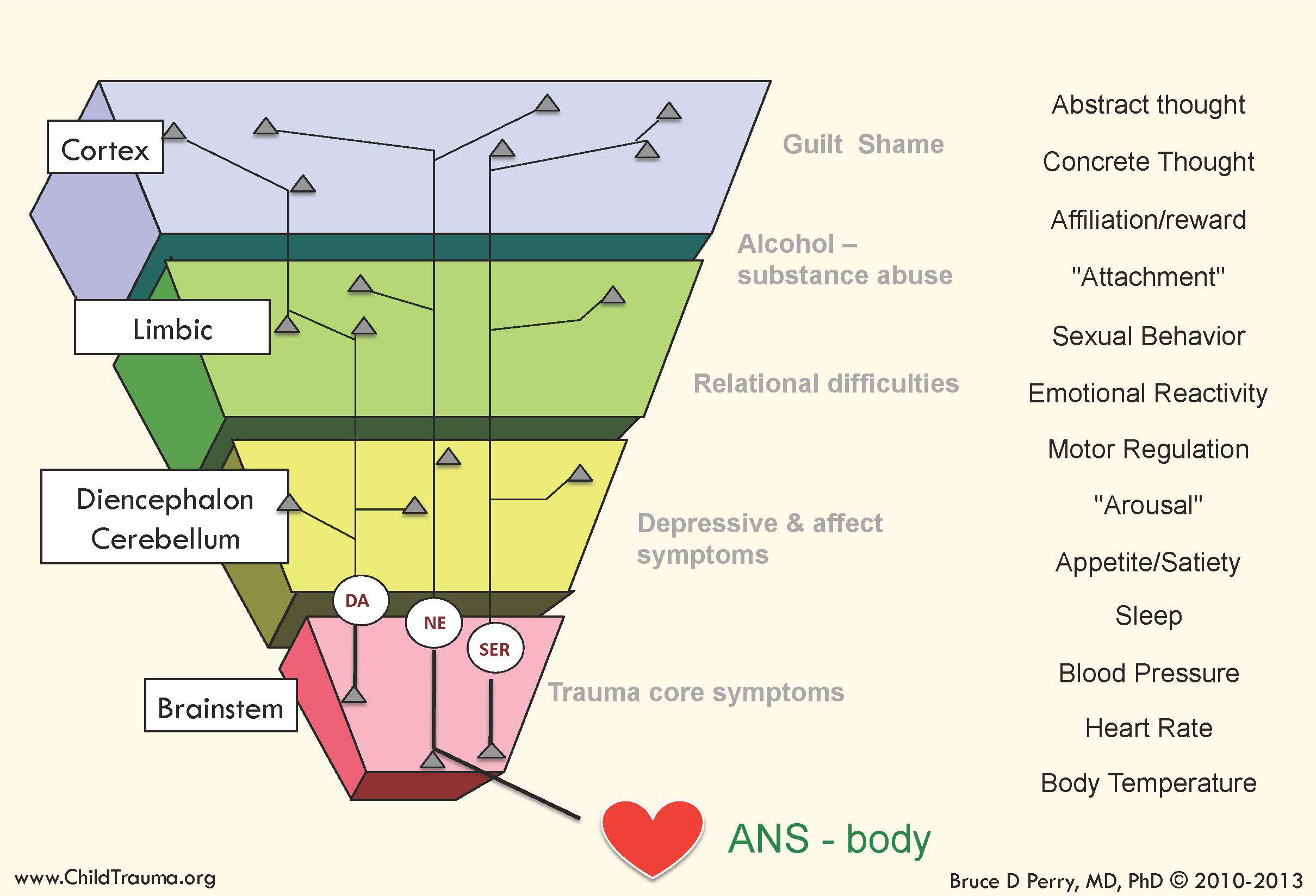Modeling the Brain and Ego
I recently finished reading What Happened To You?, a dialogue between Oprah and Bruce Perry, a psychiatrist who specializes in understanding adverse childhood experiences and trauma and how they impact human behaviour.
Besides offering an invaluable reframe from asking “what’s wrong with you?” to asking “what happened to you?” when trying to understand why we might behave or react in the ways we do, another huge takeaway for me was the neurosequential model of the brain.
The neurosequential model
This model describes four connected areas of the brain and how sensory inputs are processed by each area, in series. Sight, sounds, and smells are first processed by the unconscious / physical systems (brainstem, diencephalon), and then processed by the emotional (limbic) and logical (cortex) systems.

One phenomenon described by this model: if the earlier brain systems (brainstem, diencephalon) become overly sensitive to certain inputs, they can overreact in their response and ‘hijack’ your mind/body before those inputs can be processed by your rational brain (cortex). So you might act before you even know what’s happened.
A severe example of this is veterans with PTSD who developed hyper-sensitive stress responses to sudden loud noises. Their brains quickly learned to associate “loud noises = DANGER” and filed this away in the lower brain systems as Past Experience. This association was adaptive when loud noises meant gunfire or explosions; potentially life-threatening situations. But now when they hear a loud noise, the diencephalon pattern-matches against these past experiences, activates a stress response, and causes the person to ‘automatically’ duck and cover.
All of this activity happens before the cortex is able to receive the input and understand that time has passed, they’re not on deployment or in combat, and the loud noise was just a motorcycle starting up.
This whole thing *gestures wildly* applies to all sorts of adverse experiences and trauma we’ve been through, and can help us (1) understand, neurologically, why we are reacting, (2) explore what happened to us, and (3) find how to work around/with it.
(I highly recommend checking out the book if you’re interested in this kind of modeling of the brain, and understanding and regulating stress responses. Bonus note: even specific scents can trigger a stress response.)
But that’s not where we end.
Ego
I’m currently entertaining this idea that your ego is like a bouncer in your mind, with the goal of protecting you from emotional pain, usually via rationalization.
Asked out a girl but got rejected? Eh, you weren’t that into her anyway.
Missed a deadline at work? Is the world going to end, no.
Didn’t make it to the gym today? It’s fine, there’s always tomorrow.
This view of ego kinda fits in with the neurosequential model–the ego is like its own system, one that lives between the limbic system and the cortex, or maybe it’s a subsystem within the limbic system. It takes in sensory input and adds noise before sending signals to the cortex. And a very active ego will add lots of noise, twisting things in your mind and leading your cortex to rationalize. The ego system also has the ability to hijack your mind/body in response to certain inputs.
This amended mental model might be crude, but I think the goal here is less about accuracy and more just about awareness of the thing.
And once you start noticing when your ego kicks in, you can start digging deeper. How is your ego trying to protect you? Where is the response coming from? What was the original signal, before all that noise was added in?
And how can you start to integrate your ego?